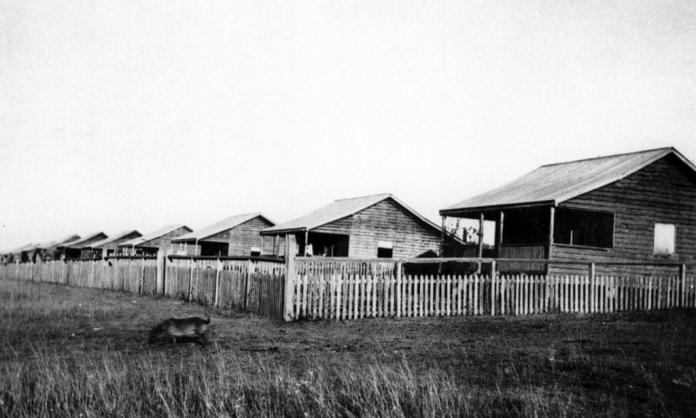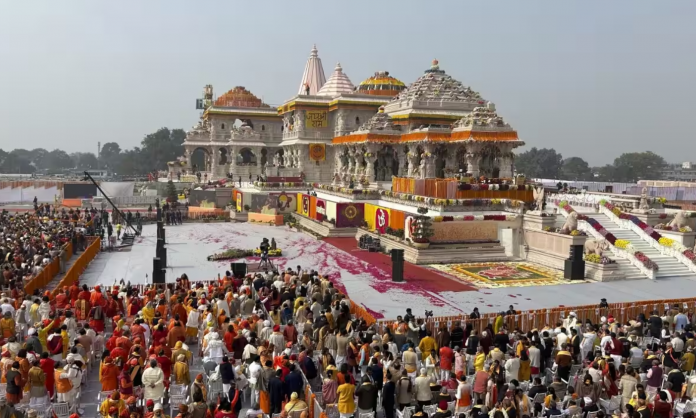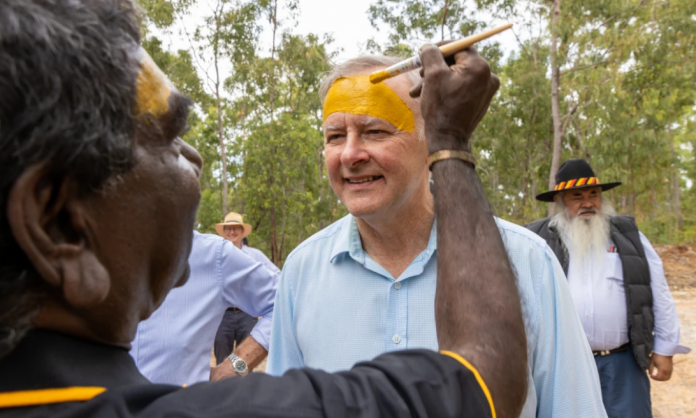The spread of COVID-19 into western New South Wales is taking a terrible toll on the large Indigenous population in the area. More than 100 years ago, the Spanish flu wrought similar suffering on Indigenous communities in Queensland, where disease found fertile soil in neglected and woefully under-resourced settlements.
One of these was the Barambah Aboriginal Settlement, today known as Cherbourg, 250 kilometres north-west of Brisbane. A report from the time observed “596 natives were affected, and only ten remained unaffected”. Nearly one in ten of the 1030 people who died from the Spanish flu in Queensland contracted the virus at Barambah.
The Barambah Settlement was part of the Australian mission system, a sordid network of prisons Indigenous people were place in after being forced off their land. Aboriginal people from across Queensland, often whole families and communities, were taken to Barambah. Their lives were tightly controlled by government, and they were often used as a source of cheap or free labour.
A state official—the so-called chief protector of Aboriginals— oversaw the mission. Its purpose, according to The Aboriginal Protection and Restriction of the Sale of Opium Act of 1897, was to provide “better protection and care for the aboriginal and half-caste inhabitants”. But in May 1906, the president of the Murgon Progress Association described the Barambah Settlement as “a depot of semi-starvation, disease and misery”.
Aboriginal people living at Barambah were subject to overcrowding, shocking sanitation and poor nutrition. Only six toilets existed for 103 families, and effluent from humans and cattle often contaminated the water supply. At school, children crammed into classrooms at double capacity.
The main source of food on the settlements was rations provided by the mission administrators, comprised primarily of flour and sugar. Working Aboriginal men were allowed one pound of meat per day, often cuts full of bone from unhealthy cattle. Small quantities of milk were provided to nursing mothers and children, with the Home Secretary’s Office advised in 1906 that the rest was “set for butter for the use of officials”. Children in the settlement dormitories complained of persistent hunger. Outside rations, inmates were expected to hunt game—the supply of which dwindled calamitously over time—or scavenge for food.
These factors combined to damage the health of residents. Between 1906 and 1920, the mortality rate at Barambah was ten times the national average. A quarter of all children died before their first birthday, and epidemics of influenza, whooping cough and tuberculosis struck regularly.
Although the Queensland Spanish flu outbreak was less severe than those in the southern states, conditions at Barambah invited disaster. Within three days of the first reported case at the settlement, 35 Indigenous people had died.
“The swiftness and severity with which the epidemic hit was like a mini-holocaust”, historian Thomas Blake writes. “So many deaths occurred in such a short time that people were wrapped in blankets and buried in mass graves. Many victims died huddled around a fire and in order to straighten their bodies for burial, their legs had to be broken.”
Those ill with the flu were met with indifference from the medical establishment. Most were refused treatment at hospitals and relegated instead to makeshift camps barely able to offer basic first aid.
Some of these compounds, known as “relief depots”, had initially been established as a site to punish Indigenous people who contracted venereal diseases. Academic and activist Gordon Briscoe describes them as cage-like, “with 10-foot-high cyclone fence and topped by barbed wire to prevent entry and escape ... There were no structures inside them where the sick could shelter from the cold and rain”.
Many died in these compounds while waiting for treatment. Existing ill-health, and the lack of medical attention, resulted in the incidence of Spanish flu continuing in Barambah for more than a year after the pandemic was contained in the rest of Queensland.
State authorities refused to accept that the conditions for which they were responsible contributed to the severity of outbreak. Instead, Chief Protector Bleakley described residents of Barambah as “undermined with disease, drink, opium and prostitution”.
A Doctor Junk attributed the high mortality to a “fatalistic creed among the Australian Aborigines”, reflecting the racist propaganda of the period according to which Aboriginal people were a “dying race”. Even after the Spanish flu disaster, nutrition and sanitation conditions remained relatively unchanged well into the 1930s.
The patterns of oppression and neglect that produced catastrophe at Barambah continue in the Australian government’s treatment of Aboriginal communities today. More than 1,000 Aboriginal people have contracted COVID-19 so far in the New South Wales outbreak, including 13 percent of Wilcannia’s population. At least three have died. Now, like one hundred years ago, poor health, inadequate medical facilities and government indifference mean Indigenous people are more vulnerable to, and pay a higher price for, public health disasters.
This article has drawn extensively from Gordon Briscoe’s 1996 Report, “Queensland Aborigines and the Spanish Influenza Pandemic of 1918-1919”, and Thomas W. Blake’s 1992 PhD Thesis, “A dumping ground: Barambah Aboriginal Settlement 1900-40”.










